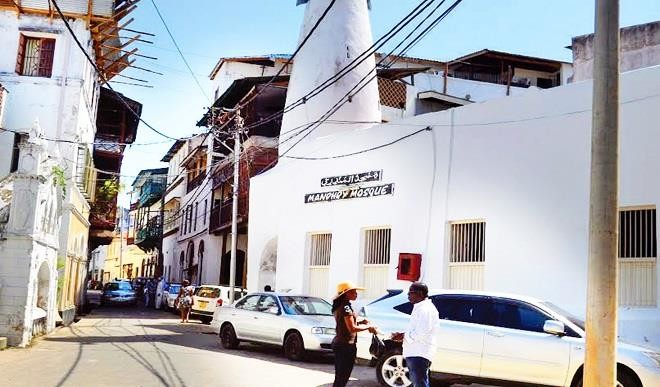
We were hoping to relax for about one hour after attaining 30,000 feet above sea level and enjoy some in-flight refreshments when the pilot announced that we would commence descent to Moi International Airport in Mombasa. It took just 40 minutes to fly from Nairobi to the coastal city and it felt like flying from Ilorin to Abuja.
Mombasa has an all-year-round tropical climate and is one of Kenya’s premiere tourist attractions for its pristine beaches that stretch along the north and south coasts, and cultural attractions dating back several hundreds of years.
Wikipedia reveals that, with an estimated population of 1.2 million people in 2014, the city is a regional cultural and economic hub. Mombasa has an extra-large port and an international airport, and is an important regional tourism centre.
Located on the east coast of Kenya, in Mombasa County and the former Coast Province, Mombasa’s situation on the Indian Ocean made it a historical trading centre, and it has been controlled by many countries because of its strategic location.
The city’s fame as a centre of coastal tourism is never in doubt. The water side reverberates with 24-hour entertainment offers, from water parks, to cinemas, water sports, mountain biking and restaurants, offering a wide range of specialties from Kenyan, Chinese and Indian cuisines.
Mombasa Island may not be the main attraction, but Bakare made sure we did not pass on a visit to the Old Town and Fort Jesus. What is today known as Fort Jesus Museum is an embodiment of a very rich and amazing history of the coastal town. The architectural design is not only enchanting but also contains a rich heritage of the coastal history offering lovely souvenirs and relaxation spots inside the museum.
The Fort built by the Portuguese in 1593-1596 in the designs of Giovanni Battista Cairati to protect the port of Mombasa is one of the most outstanding and well preserved examples of 16th century Portuguese military fortification and a landmark in the history of this type of construction.
The tour guide told the farm team that the museum was built in a period and region at the centre of the emerging political, commercial, and cultural globalisation. Fort Jesus, with its imposing structure, and the various traces of subsequent modifications, bears significant witness to the interchange of cultural values among peoples of African, Arab, Turkish, Persian and European origin.
After the first occupiers (the Portuguese), Fort Jesus, Mombasa, changed hands many times throughout its history, coming under Arab, Swahili and English control. Its important role in the control of trade also saw it host many of the peoples of the Indian Ocean basin.
The Portuguese regarded themselves as the representatives of Christendom rather than of Portugal and for this reason, they sailed under the flag of the order of Christ. Jesus was therefore an obvious name for the new fort.
The original layout of the fort, despite several changes, has survived almost unchanged over centuries of continued occupations and reoccupations. The story of Fort Jesus is a history of murder, siege, starvation, bombardment and treachery. It has preserved the same basic shape as when it was built nearly 400 years ago.
The tour guide told us that if we had left Mombasa without visiting this major landmark in the history of east Africa, we may have found cause for regret.
The Old Town, adjacent Fort Jesus is another interesting place to behold. According to Wikipedia, it is inhabited by a mix of local, Arab, Asian, Portuguese and British settlers till date. Buildings there are influenced by Mombasa’s trade culture, with many examples of Portuguese and Islamic architecture. It is home to the oldest mosque and hotel in Kenya, dating over 100 years back. It is today a shopping hub for Kenyan artefacts.
In 1997, the Old Town and Fort Jesus were submitted by the National Museums of Kenya for selection in UNESCO’s list of World Heritage Sites.
There is no bridge between Mombasa Island and south coast, instead the distance is serviced by ferries operated by the Kenya Ferry Service from Kilindini and Mtongwe to Likoni in the south coast of Mombasa, says Wikipedia.
The attitude of Kenyans to water is unbelievable. Blessed with 500 km of white sand beaches, one cannot help but fall in love with the amazingly clear, clean water with hundreds of shades of blues and greens and white sand beaches. Also, calm, warm waters and gently sloping sand. These strings of gorgeous beaches that stretch down to the Tanzanian border are some of the main attractions of the city.
It is definitely a great place to unwind and enjoy some great sun, sand and surf. I took out time from the team’s schedule to visit a few and learn about them. Bamburi Beach, I was told, is renowned for good restaurants and busy nightclubs; while the beach, just north of Mombasa, is a great location for water sports, such as snorkeling, scuba diving and water skiing. Camel rides on the beach and dhows cruises are also available.
Malinda Beach is another popular location for tourists because of its nice large selection of offshore coral reefs. It is a great location for big game fishing at different times throughout the year. There are many resorts here as well as numerous private guesthouses located along the deserted beaches and throughout the forest.
For want of time, I could not visit other locations, but was told of the Nyali Beach, Diani Beach and the Tiwi Beach. Stories have it that these white sand beaches are exquisite and the water is tranquil because reefs around these areas have created a perfect condition to protect the waters and make a great swimming spot.
The last night I spent with the team in Mombasa is a moment to cherish for a long time. After a heavily packed activity during the day, I was tempted to simply retire to my Sarova Whitesand beach resort for a decent rest preparatory to leaving for Nigeria the next day, but there were other ideas for the evening. To experience the city from a different angle, we were treated to a dinner dhow cruise that goes around the city, while enjoying a live band on board. We viewed the city lights as the dhow cruise gave us time to explore the uniqueness of the town.
We had various sea foods cooked on board. We danced and even performed popular Nigerian songs to the amazement of the Asians who were on the same cruise ship with us. That singular experience triggered a strong bond amongst the farm team and like kids, we all wished the euphoria would last a life time but it was about midnight and we went back to shore. We had to rush back to the hotel, catch some quick nap before catching a 5:05 am flight en-route Nairobi to Nigeria.

 Join Daily Trust WhatsApp Community For Quick Access To News and Happenings Around You.
Join Daily Trust WhatsApp Community For Quick Access To News and Happenings Around You.


